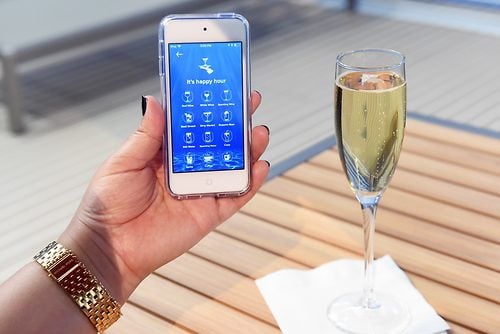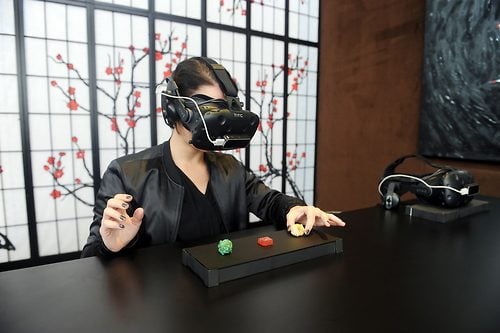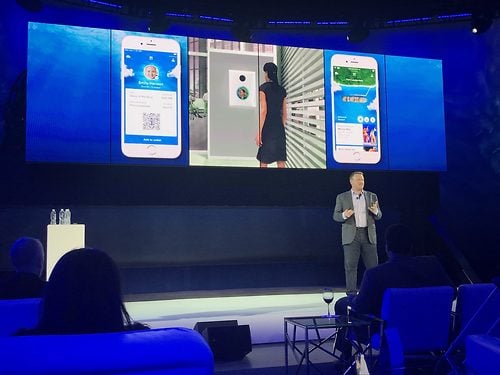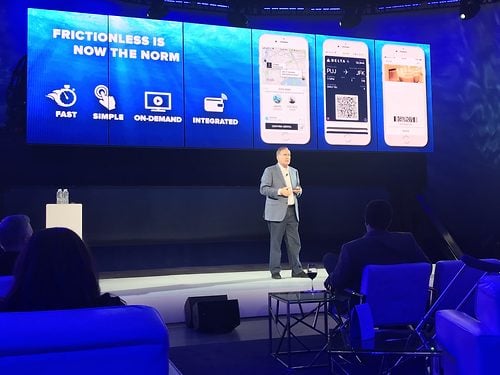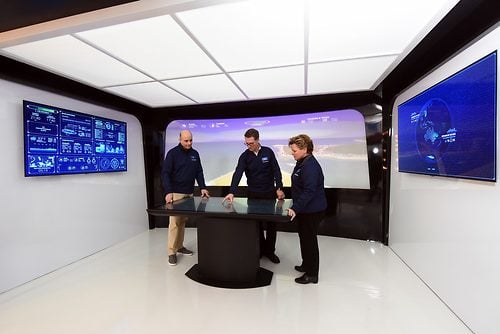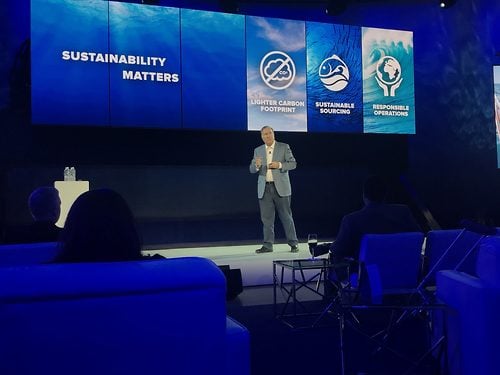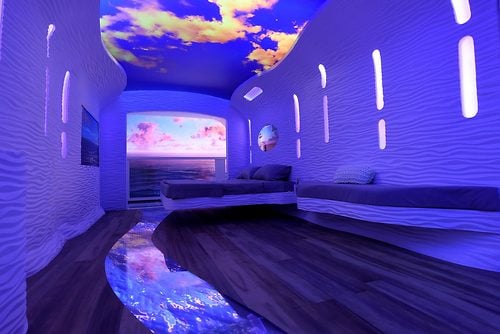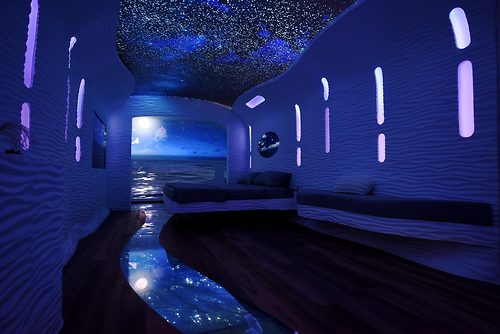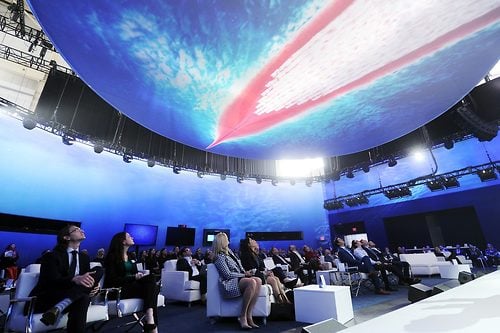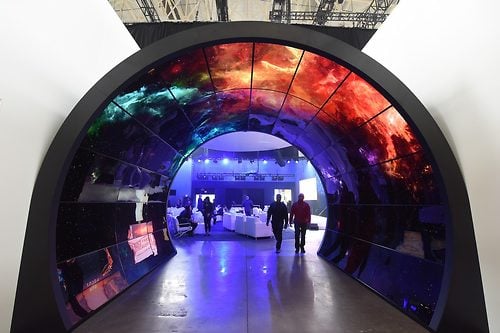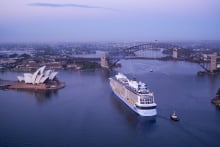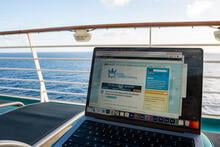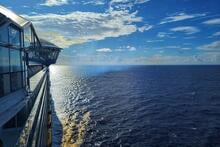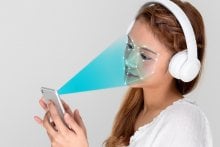Royal Caribbean announced today a slew of technological innovations that aim to make things simpler and easier for guests going on a cruise.
At the heart of the new technology overhaul is a new smartphone app that will be rolled out to every Royal Caribbean ship over the next two years. The app promises to eliminate check-in lines at ports, equip crew members to anticipate guests’ needs, and enable giant cruise ships to sail through the water on a fuel-saving curtain of air.
Some features of the new app include
- Allowing guests to board ships in the time it takes to order fries from the drive-through, skipping check-in lines thanks to facial recognition technology that knows who they are on arrival.
- Sign up for shore excursions, order drinks and make dinner reservations without ever leaving their chairs by the pool thanks to an intuitive app on a device most of them already have—a smartphone.
- Indulge in VR and AR experiences that transform ship spaces into virtual environments and interactive games, where stateroom ceilings might be replaced by starry skies, the walls of a restaurant can transform into the sights and sounds of an outdoor café and digital signs challenge you to play an arcade game.
Many of these same technologies are being deployed to put the power to manage your vacation in the palm of your hand. Jay Schneider, RCL’s senior vice president, digital, explained, “Our new app will make it simpler than ever to book and plan your cruise vacation from home or with a travel agent. Once on board, you can navigate our ships with interactive maps and guides, explore the ship with cool features like x-ray vision, or order drinks that can be delivered to you wherever you are on the ship.” The app, along with the next generation of the company’s WOW Bands, will also unlock guest staterooms and enable guests to control stateroom lighting and temperature.
This technology will be available on 13% of ships by the end of 2017, 50% by the end of 2018 and fleetwide by the end of 2019.
Frictionless Check-in
Royal Caribbean is turning to a combination of technologies to make the process of getting onboard a Royal Caribbean ship the easiest it has ever been. In Royal Caribbean's eyes, less time spent boarding means more time for vacation. To that end, Royal Caribbean is utilizing technologies ranging from facial recognition to RFID tagging to GPS mapping to Bluetooth-enabled beacons to streamline boarding, manage check-ins automatically and improve wayfinding.
“We are finding ways to eliminate friction and frustration, giving guests more time to make the memories that make vacations special,” said Schneider.
Lessened environmental impact
At a Royal Caribbean's invitation-only Sea Beyond event in New York City, innovations aimed at enhancing overall ship management and improving energy efficiency were on display.
For example, forthcoming command centers will use augmented reality to assist with navigation and maneuvering. “Think of it as enabling the nautical equivalent of flying on instruments,” said Richard D. Fain, RCL’s chairman and CEO. “Our ships always operate with keen sensitivity to the limitations the weather may impose. But having new means to mitigate the weather’s impacts on departures and arrivals helps us uphold schedule and itinerary commitments important to our guests,” added Fain.
Royal Caribbean is also innovating to reduce fuel consumption across its fleet, which not only lowers operating costs but also lightens stack emissions that are part of cruising’s environmental footprint. Historically, each new class of RCL ships is significantly more fuel efficient than its predecessors as new high efficiency appliances, window tinting and improved lighting, heating and cooling technologies help reduce energy needs. The company continues to evolve hull designs to reduce drag, an evolution most evident in the “bulbous bows” now common on cruise ships. In addition, RCL is pioneering the use of an air lubrication system that coats the hulls of its ships with millions of microscopic air bubbles to further reduce resistance and drag. In initial uses, air lubrication has reduced fuel consumption at speed by 7 to 8 percent.
Complementing RCL’s energy conservation efforts are initiatives to use alternative energy sources. Some RCL ships are already equipped with solar panels that generate sufficient power for limited onboard needs. At Sea Beyond, RCL will be previewing the use of fuel cells for power generation. Fuel cell use could fundamentally change ship design by distributing power sources throughout the ship. Furthermore, adoption of fuel cells would also mean producing less energy from diesel generators, reducing ships’ environmental footprints. The company is planning fuel cell experiments on existing ships, with an eye to extensive use of fuel cells and liquefied natural gas (LNG) propulsion on its upcoming Icon class of ships. “We are fully embracing the expectation that we run an environmentally sustainable business,” said Fain. “Experimenting with new ways to power our ships is just part of our broad commitment to being a responsible environmental steward.”
Focus on the crew
The innovations enriching the cruise guest experience will be complemented by a suite of tools for crews, as well. For example, the app-enabled offerings for guests will be mirrored on the crew side by mobile applications that help crew members check-in guests, complete required paperwork, track delivery of guests’ bags to their staterooms, and interact with guests and anticipate their needs throughout their vacations.
In addition, crews will have access to easier means to manage their own schedules, stay connected to friends and family while onboard, and stay connected to RCL during their off-contract periods.


